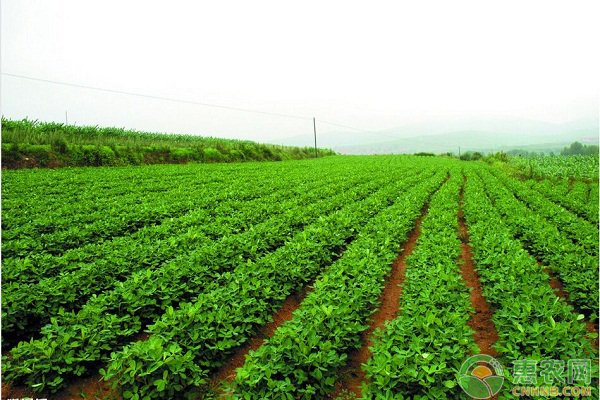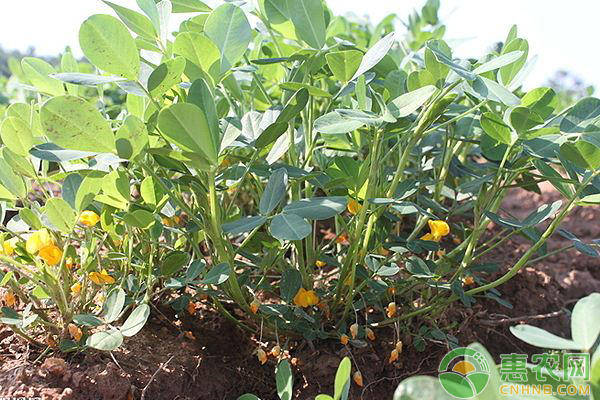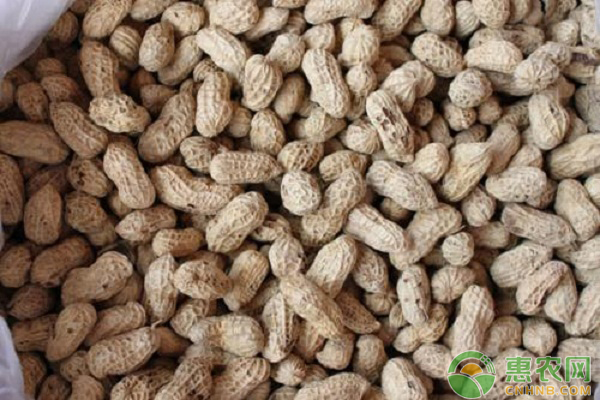Peanut is one of the most important oil crops in China. At present, the warm spring season is the time when peanuts are about to be fertilized. The fertilization technology of peanuts is also a key issue during management. This article will mainly talk about the formula fertilization technology and organic fertilizer of peanuts. The application of biological bacteria fertilizer and the like on peanuts.

First, peanut formula fertilization technology
Peanut formula fertilization is based on the fertilizer requirement of peanuts, the fertilization performance of soil and the effect of fertilizer. Based on the application of organic fertilizer, according to the appropriate dosage of nitrogen, phosphorus, potassium and trace elements, scientific proportioning and rational use To meet the needs of various nutrients in peanut growth and development.
1. Peanut formula fertilization has the following benefits:
(1) Improve economic efficiency. Formulated fertilization can increase the yield of peanut pods by 16%~24%, and increase the yield by more than 100 yuan.
(2) Improve fertilizer utilization. With the combination of nitrogen and phosphorus fertilizers, the utilization rate of nitrogen fertilizer was 7.33% higher than that of single application of nitrogen fertilizer, and the utilization rate of phosphate fertilizer was 3.58% higher than that of single application of phosphate fertilizer. The application of nitrogen, phosphorus and potassium fertilizers increased the utilization rate of nitrogen fertilizer by 2.0%~6.1%, and significantly promoted the nitrogen fixation of rhizobium.
2. Determination of peanut fertilization amount
The amount of peanut fertilization should be determined according to soil fertility and target yield. The demand for different nutrients can be obtained by the following formula:
Fertilizer demand = [(Peanut unit yield nutrient uptake × target yield) - (soil measured value × 0.15 × correction factor) 】 / (Nutrance nutrient content % × fertilizer quarter utilization %).
The advantage of using this formula to calculate the demand for fertilizer requirements is that the amount of various fertilizers can be determined based on the specific nutrient content of the soil. However, it is unrealistic to measure the effective nutrients in the soil of each peanut field in actual field production. In the case where the soil's effective nutrients are unknown, compensated fertilization can be used to determine the peanut fertilizer demand. The method is determined according to the nutrient absorption amount of each 100 kg pod and the absorption characteristics of each nutrient element.

Second, peanut leaf spray application technology
Peanut leaves have a strong absorption function and can be run to various parts of the plant. The use of foliar fertilization has the effects of high fertilizer absorption rate, saving fertilizer and increasing yield, especially for peanut deficiency syndrome. Peanuts grow vigorously, and the leaf surface absorbs more quickly. Or in continuous rainy days, the soil contains more water. When peanut roots absorb nutrients, the fertilization effect of leaves is more significant. Spraying foliar fertilizer in the middle and late stages of peanuts can prevent premature aging, improve photosynthesis efficiency, and promote fruit growth. Fertilizers suitable for use as foliar fertilizers in production and methods of use are as follows:
(1) Potassium dihydrogen phosphate. Generally, it is sprayed twice with a 0.2% potassium dihydrogen phosphate solution, and 55-60 kg of spray solution per acre. If the leaf surface is yellowish, 0.5% urea solution can be added and sprayed, and the yield increase effect is more remarkable.
(2) Boron fertilizer. Peanuts are sprayed with boron fertilizer during the filling period of the pods. Generally, they are sprayed once during the full bloom period and the pod filling period. Each time, 120g of borax is used per mu, first dissolved with a small amount of warm water, and then diluted with 50kg of water to spray the leaves.
(3) Iron and zinc fertilizers. Peanut is extremely sensitive to iron. When the autumn peanuts are full and the pods are filled, 0.4% of ferrous sulfate is sprayed once, which can increase production by more than 10%. For example, if the zinc fertilizer is mixed and sprayed in the iron fertilizer, the yield increase effect is better. For each acre, use 160-200 g of ferrous sulfate, 100 g of zinc sulfate, and add 55 kg of water to dilute and spray evenly.
(4) Photosynthetic micro-fertilizer. Photosynthetic micro-fertilizer applied on peanuts can not only meet the needs of various trace elements, but also inhibit light respiration, reduce consumption, improve photosynthetic efficiency, and promote pod fullness and fullness, which can increase yield by more than 7%. Spray once in the full bloom period of peanut full bloom and pod, use 100g of photosynthetic micro-fertilizer per acre, add 50kg of water, choose to spray on cloudy or sunny afternoon.
(5) Rare earth. Rare earth can promote the development and fullness of pods. In the full bloom period and pod filling period, 15g of rare earth nitrate or 50ml of rare earth phytoplankton per acre, 50kg of water, diluted and evenly sprayed on cloudy or sunny afternoon.
Third, the use of organic fertilizer technology
Peanuts are generally grown in sandy soils. These soils have low organic matter content, poor aggregate structure, and leakage of water. Therefore, high yield of peanuts requires improvement of soil conditions, increase of organic matter, activation of soil, improvement of soil structure, fertility and fertilization. Water supply capacity. The use of organic fertilizer is a necessary condition for improving soil conditions. It contains a large amount of organic matter, and has a complete range of nutrients. The fertilizer is durable, and the thinner the sandy land, the more organic fertilizer is required to achieve the purpose of improvement. There are generally three ways to use organic fertilizer: one is fertilization after being fermented and processed into farmland; the other is that straw is directly returned to the field; the third is to ferment and process organic matter such as crop straw, food waste, animal waste, etc. into pellets or Other dosage forms are applied to the soil or sprayed on the foliage; the fourth is mixed with chemical fertilizers and applied to the farmland. This is the way of promoting organic and inorganic compound fertilizers.
Fourth, the application of biological bacterial fertilizer on peanuts
Biological microbial fertilizer is a kind of product that causes the crop to obtain a specific fertilizer effect by the life activity of microorganisms, and is a kind of fertilizer used in agricultural production. Since a period of time, due to the large-scale application of chemical fertilizers to the soil, the saline-alkali slabs have been destroyed, and the soil structure has been destroyed. In particular, the beneficial microorganisms that decompose the pests, the phosphate-dissolving bacteria, the potassium-dissolving bacteria, and the beneficial microorganisms that balance the soil nutrients have been inhibited and destroyed. Peanut root rot, iron deficiency yellow leaf disease and cockroaches have become more and more serious, causing serious obstacles to peanut production. At present, it is found that the biological fertilizer containing Bacillus including glial spores, Bacillus subtilis and Thermomyces faecalis has full-price nutrition, deworming and disease prevention effects.

V. Peanut fertilizer effect post-shifting technology
(1) Peanut fertilizer effect post-shifting technology
Peanuts are inconvenient for topdressing due to mulching cultivation and underground results. Most of them are fertilized one time before sowing, resulting in prolonged lodging in the early stage, early defermentation and premature aging, increased leaf spot disease, early leaves, poor pod filling, and affecting yield and quality. Fertilizer effect post-shifting technology refers to the use of slow-release fertilizers, organic fertilizers, organic-inorganic compound fertilizers, bio-organic fertilizers and other slow-release long-acting fertilizers to delay the fertilizer efficiency period, enhance the fertilizer efficiency in the middle and late stages, and control the prolonged period to prevent premature defamation and premature aging. Improve fertilizer utilization and reduce pollution of the environment to the environment.
(2) Characteristics and application of peanut controlled release fertilizer
Slow-release fertilizer is a special film on the outer layer of traditional fertilizer. According to crop nutrient requirements, the release rate and release of controlled-release nutrients make the nutrient release curve consistent with crop demand. The release rate of nutrients by controlled release fertilizer depends on the temperature. The high temperature during the day is released quickly, and the low temperature is released slowly at night. The photosynthesis is also strong when the daytime temperature is high. The following matters should be noted when using peanut controlled release fertilizer:
The first is the choice of fertilizer types. At present, there are many types of controlled release fertilizers according to different controlled release periods and nutrient contents. The different controlled release periods mainly correspond to the length of crop growth period. Different nutrient contents mainly correspond to the fertilizer requirements of different crops, so it must be in the process of fertilization. The application is selected in a targeted manner. It is better to use a low nitrogen, high phosphorus and high potassium type formula on peanuts. As the application of the bottom fertilizer strip, the application amount varies depending on the yield and the soil fertility, and the application amount per mu square meter is 40~50kg.
The second is the period of application. Slow-release fertilizer must be used as a base fertilizer or a previous top dressing, that is, when the crop is planted or during the seedling growth period after sowing.
The third is the method of application. The application of controlled release fertilizers should be done to isolate the fertilizers, and the ditch (strips) should be applied to the soil. Generally, the distance between the seeds and the fertilizer should be 7~10cm, and the depth applied to the soil should be about 10cm.
Citizen Blood Pressure Monitor
Blood pressure Monitor Sale,Blood Pressure Monitor Smart,Blood Pressure Monitor Upper Arm Talking,Blood Pressure Monitor Upper Arm Automatic,Blood Pressure Monitor Use
Shenzhen Urion Technology Co., Ltd. , https://www.urionhealth.com